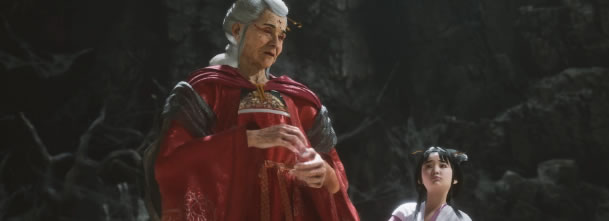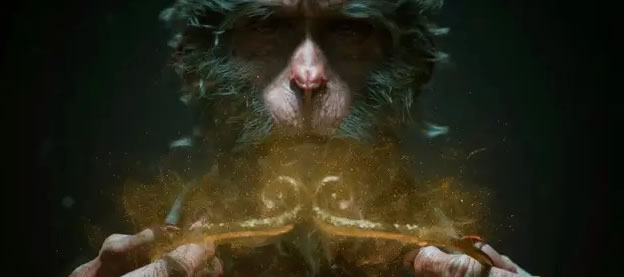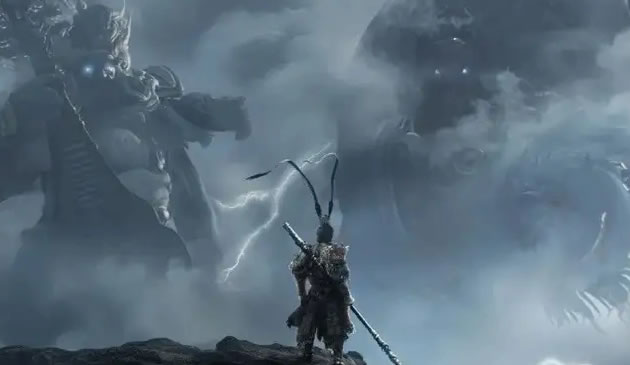On Tuesday, August 20, 2024, a highly anticipated video game based on a timeless Chinese literary classic was unleashed onto the global stage, electrifying gamers around the world.
The game, Black Myth: Wukong, is an action-packed role-playing masterpiece developed by Shenzhen-based Game Science. Drawing inspiration from the vast and intricate world of Chinese mythology, the game is deeply rooted in the 16th-century epic Journey to the West, one of the four great pillars of Chinese literature. With its infusion of traditional Chinese cultural elements, Black Myth: Wukong offers players a mesmerizing journey into the heart of Chinese imagination and landscapes.
Already dominating sales charts on multiple platforms, including Steam and WeGame, Black Myth: Wukong marks a significant milestone in the world of Chinese Triple-A games—those high-budget, high-profile titles produced and distributed by major, renowned publishers.
The story picks up after the legendary Tang Monk and his disciples successfully retrieve the sacred Buddhist scriptures. The indomitable Monkey King, Sun Wukong, has since been enshrined as the Fighting Buddha, but has mysteriously faded into legend. Players, stepping into the role of the Destined One, embark on an epic quest to unravel the truth behind this fabled tale.
Black Myth: Wukong masterfully crafts a breathtaking dreamscape filled with iconic Chinese scenery—rugged mountains, ancient pathways, pavilions nestled among serene waters, desolate deserts, and timeworn temples. This ethereal vision draws heavily from the beloved 1986 television series Journey to the West and film director Stephen Chow’s cinematic rendition, A Chinese Odyssey.
The game’s cast of minor demons, demon kings, gods, and Buddhas are all steeped in Chinese aesthetics, creating a modern, visual compendium of mythical creatures that echoes the ancient Classic of Mountains and Seas, a cornerstone of Chinese mythology.
Adding to its rich cultural tapestry, the game features traditional Chinese instruments such as the guzheng, bowls, wooden clappers, and gongs, with much of the soundtrack composed using traditional Chinese chord structures.
With its blend of ancient dialogue and a worldview that harmonizes Confucianism, Buddhism, and Taoism, players are invited to immerse themselves in a world where even the simplest act—like wandering aimlessly or sitting alone by a cold river—becomes a uniquely profound experience.
The game doesn’t just focus on action but also emphasizes the cultural and philosophical underpinnings of the source material. It features traditional Chinese instruments, ancient dialogue infused with Confucian, Buddhist, and Taoist ideologies, and an environment that mirrors the spiritual journey of the characters. The game’s world is designed to evoke a sense of serenity and contemplation, offering players a unique experience that goes beyond typical gaming narratives.
Black Myth: Wukong is more than just a game; it’s a cultural phenomenon that bridges the gap between traditional Chinese stories and modern gaming. By weaving together elements of mythology, literature, and state-of-the-art technology, the game offers players a deeply immersive experience that is both thrilling and thought-provoking. As players journey through the game, they are not just playing a character—they are stepping into a world that celebrates the rich heritage of Chinese storytelling.
Journey to the West is a cornerstone of Chinese mythology, chronicling the epic journey to the Western Heaven to obtain sacred Buddhist scriptures. At its heart is the monk Xuanzang and his four loyal disciples: Sun Wukong, Zhu Bajie, Sha Wujing, and the Jade Dragon Crown Prince. Throughout their perilous journey, these brave disciples shielded their master from countless monsters and disasters. After enduring 81 trials, they finally reached their sacred destination. This legendary novel was penned by Wu Cheng’en in his later years and published in 1592.
As the most renowned mythological tale in China, Journey to the West was inspired by real historical events. A Buddhist monk named Xuanzang embarked on a grueling pilgrimage, trekking over 10,000 kilometers through harsh deserts to reach India and obtain the holy Buddhist sutras. His first disciple, Sun Wukong, is a monkey endowed with immense magical powers—a righteous and courageous hero capable of 72 transformations. Unlike conventional heroes, Sun Wukong defies tradition, championing the cause of freedom with his signature battle cry: “Hey, I’m coming!” Together with Zhu Bajie and Sha Wujing, he vanquished formidable demons and ensured Xuanzang’s mission was fulfilled. Their pilgrimage embodies the disciplined essence of Buddhism, with Journey to the West imparting timeless lessons on self-discipline and the triumph over adversity. This masterpiece has left an indelible mark on the Chinese spirit.

Leave a Reply